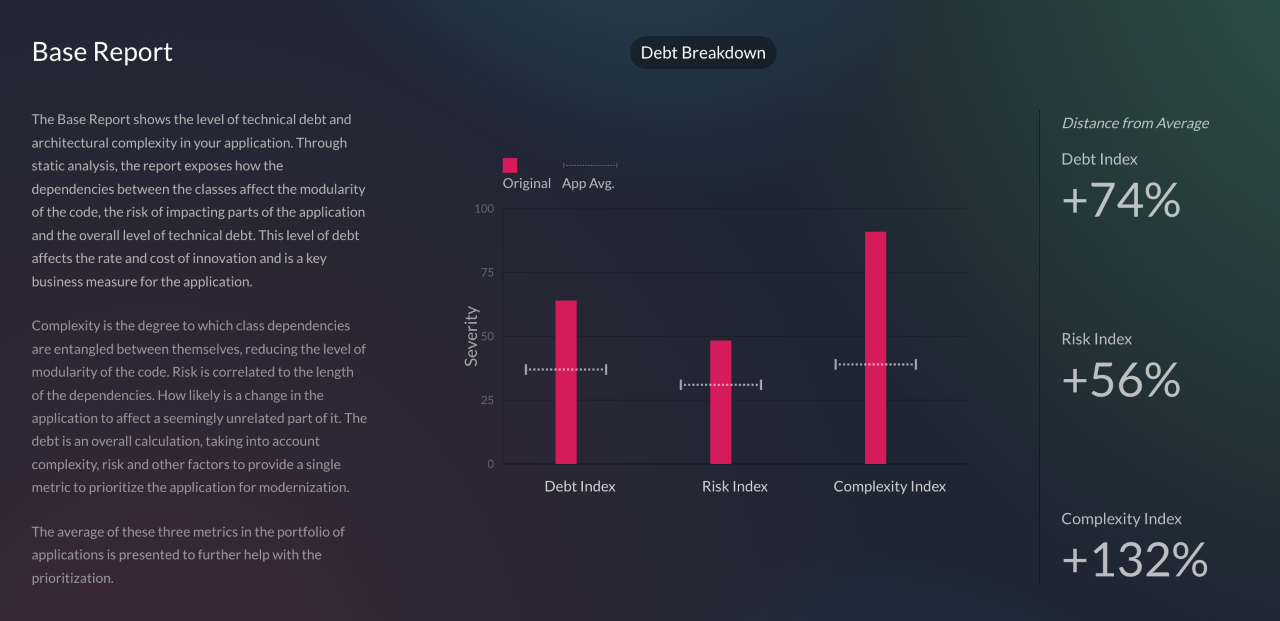 CLOUD
CLOUD
 CLOUD
CLOUD
 CLOUD
CLOUD
Application modernization startup vFunction Inc. today added a companion to its automated software modernization platform that organizations can use to calculate the impact of technical debt across their application portfolio to help in setting priorities for which applications to modernize.
The company, which raised $12.2 million in seed funding in early 2021 and $26 million more late in the year, sells a modernization platform that combines dynamic analysis, static analysis, data science and automation to extract services from monolithic applications written in Java. It transforms them into the loosely coupled microservices that are typically used to build cloud-native applications.
Technical debt is the umbrella term for hacks and workarounds that developers use to achieve short-term goals while creating a need for longer-term fixes. A classic example of technical debt was the Year 2000 problem, in which small compromises developers made to save memory and disk storage in the 1970s by using two-digit dates became a huge problem in the 1990s when the workarounds threatened to disrupt date calculations worldwide.
The new vFunction Assessment Hub uses machine learning to “quickly analyze applications and provides a limited set of reports. From there it’s one click to move to modernization,” using vFunction’s Modernization Hub, said founder and Chief Executive Moti Rafalin. The assessment measures the risk of changes that impact stability based on the depth and length of the dependency chains and then aggregates those metrics to assess the overall technical debt level.
In building the technical debt analyzer, vFunction focused on assessing complexity and risk. “We analyze interdependencies that make code complex and hard to maintain. The risk has to do with the degree to which changing one part of your code affects other parts,” Rafalin said. “We then compare it to the rest of your applications to show how they compare to each other.”
The report provides just three metrics (pictured) with a single summary metric that represents total technical debt on a scale of 1 to 100. Reports are intentionally terse because the Assessment Hub “is for decision-makers,” Rafalin said. “It doesn’t overwhelm you with detail.”
The Modernization Hub is a cloud-based tool that analyzes existing applications and identifies functions that can logically be broken out for conversion. It doesn’t perform code conversion but assesses the complexity and time needed to complete the modernization effort.
“The problem with existing assessment tools is that they provide lots of information but it’s not actionable,” Rafalin said. “They also leave you hanging because they don’t do the modernization vFunction does.”
The Assessment Hub will be given away for free initially “because it helps customers make the decision of what to modernize,” Rafalin said. The assumption is that many will pay for the modernization companion.
The Assessment Hub, packaged in packs of 10 applications, is now available for enterprises in the Amazon Web Services Inc. Marketplace and through vFunction partnerships with systems integrators and cloud providers.
THANK YOU